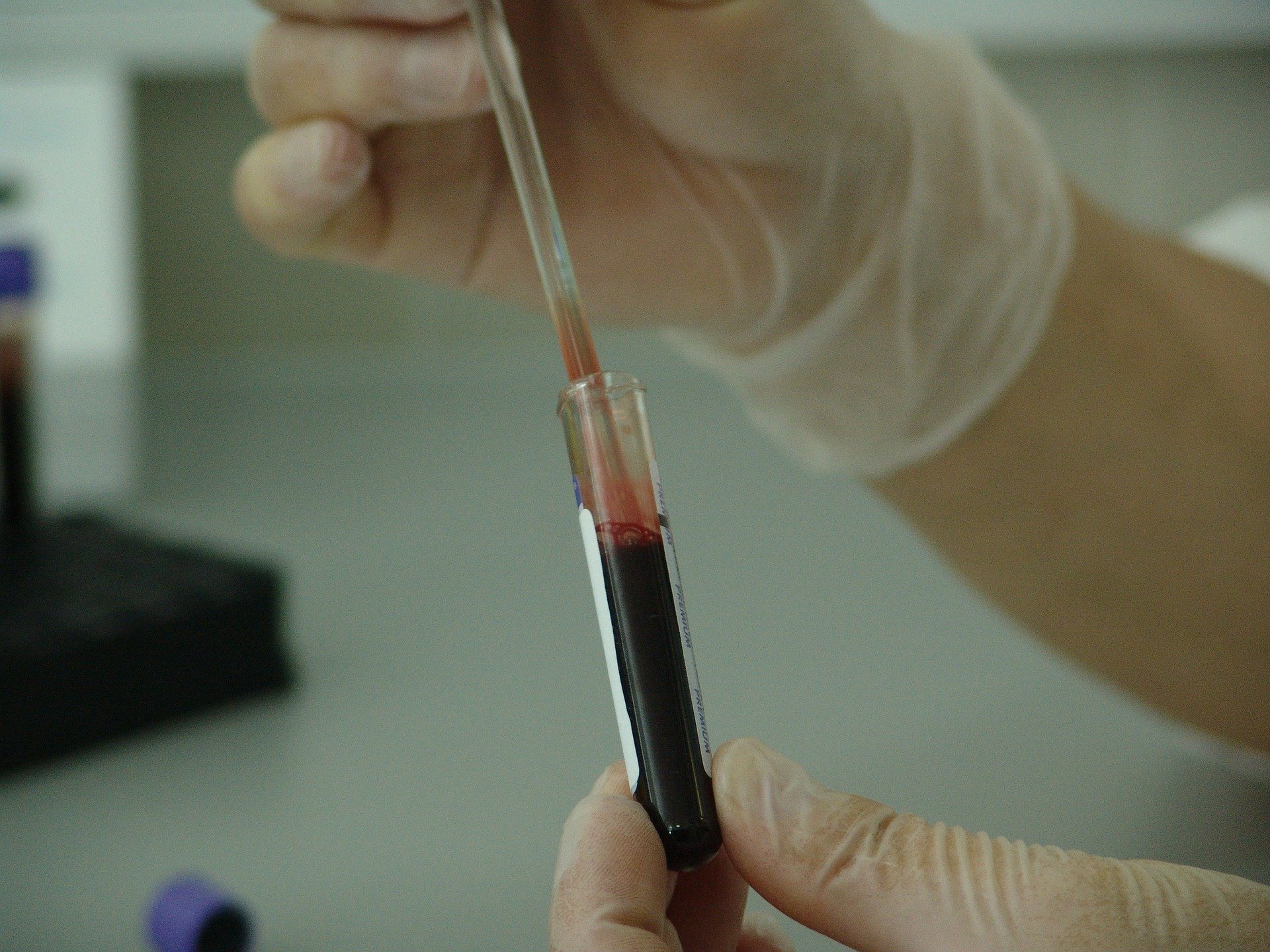Thalassemia Intermedia
What is Thalassemia Intermedia?
Thalassemia Intermedia is form of Beta Thalassemia where patients develop anemia and may or may not require blood transfusions. They can have serious complications like iron overload, blood clotting (thrombosis), enlargement of the spleen and liver, when they receive blood transfusions some patients develop allo-immunization - antibodies to some of the red blood cells, this makes it difficult to give them matched blood transfusions. Thalassemia Intermedia syndrome can also present in several compound heterozygote states (mixed mutations) and these patients present in a similar way to Beta Thalassemia Major with the anemia being less severe than that of the Thalassemia Major patients. Thalassemia Intermedia could also be HbE-beta, delta-beta0 or other genotype combinations. Anemia and other symptoms vary between individuals from mild to moderate sometimes needing blood transfusions. This group of thalassemias is also called non-transfusion dependent thalassemia.
Patterns of Inheritance
Thalassemia Intermedia is inherited when the offspring inherits two copies of a mutated beta/delta-beta/e-beta globin gene from both parents. It is usually caused by minor and/or silent mutations in the HBB gene on chromosome 11.
The Thalassemia Intermedias - especially delta-beta0 genotypes are common in areas like Greece, Italy, Asia and Africa.

Image source: Pixabay
Symptoms and Diagnosis
Symptoms
Signs and symptoms in Thalassemia Intermedia are seen within 5-6 years of a child’s life. The child presents with mild or moderate forms of anemia. The decision to start the child on blood transfusions is usually taken by the treating hematologist in consultation with the parents and family. Some individuals are not transfused or rarely transfused and this can affect their physical growth and development. Other symptoms of Thalassemia Intermedia are:
- Facial and other bone deformities due to marrow hyperplasia
- Splenomegaly (enlargement of spleen)
- Hepatomegaly (enlargement of liver)
- Iron overload due to excessive iron absorption by the gut / intestine.
- Late puberty
- Diabetes and other endocrine complications due to iron overload
- Blood clots, thromboembolic events
- Pulmonary hypertension (increased pressure in lung blood vessels)
- Leg ulcers
- Hemosiderosis (iron overload) in the heart, liver and other vital organs

Image source: Pixabay
Diagnosis
If your pediatrician suspects Thalassemia Intermedia, he/she will do some simple blood tests to confirm. Some of the blood tests include:
- Complete Blood Count (CBC) which will usually indicate hemolytic anemia with increased WBCs (white blood cell counts), low platelets (due to expansion of spleen) and microcytic anemia
- High-performance liquid chromatography (HPLC) and capillary zone electrophoresis (CE) system can check for levels of different normal and abnormal hemoglobins in the blood.
- Serum ferritin to see for iron overload.
While the above tests may suffice to get an initial diagnosis of Thalassemia Intermedia, DNA testing may be performed to understand the genotype. The DNA testing is required if the family opts for prenatal testing for the next child.

Image source: Pixabay
Current Management
There are guidelines for management of Thalassemia Intermedia or non-transfusion dependent Thalassemia (NTDT).
Regular monitoring of serum ferritin is required and iron chelation medicines used in Thalassemia Major patients are all indicated. The iron chelation should start as soon as the serum ferritin is 750 ng/mL or more. Special tests like liver function tests, cardiac ECHO, tests to see hormone function, T2* STAR MRI to assess iron overload.
The treatment options are dependent on the treating physician and available resources.
- Regular blood transfusions are currently recommended to ensure growth, children with very low hemoglobin are at risk of poor height gain. Ideally before starting blood transfusion therapy an extended blood typing should be done on the patient to understand the minor blood group antigens of the patient. Some patients with Thalassemia Intermedia may develop an allergy to blood called allo-immunization. This is caused by allo-antibodies to minor blood group antigens. The only treatment is to avoid the antigens in the unit of blood to be transfused. This is done by good blood banking support when the blood banks check for all the allo-antibodies and issue antigen negative blood units. The allo-antibodies may change over time
- Iron chelation therapy is recommended to keep the iron overload in check and avoid adverse events due to hemosiderosis (iron overload) in the heart or liver. Iron chelation therapy in the form of deferoxamine (desferal) subcutaneous infusion (with a pump), oral tablets like deferiprone (kelfer), deferasirox (few common brands are asunra, desirox, defrijet or oleptiss) is required as the excess iron from blood transfusions accumulate in the vital organs causing severe damage and even death due to cardiac and liver failure. Good iron chelation therapy prolongs life and decreases the complications caused by the iron overload on other organs like hormone glands, bones, etc.
- Splenectomy is now avoided due to post splenectomy complications, though some patients may benefit from this procedure. Your hematologist will discuss if this is necessary for you
- Most Thalassemia Intermedia patients are put on folic acid, zinc supplementation and other medicines may be recommended like aspirin to prevent thromboembolic (blood clots) events
- Many patients benefit from hydroxyurea therapy. This is currently well studied and prescribed by most doctors to increase the hemoglobin and reduce the need for blood transfusions. The dose of hydroxurea will need to be adjusted as the child grows and may be increased to keep the hemoglobin higher. If there is no response to hydroxyurea after at least 6 to 9 months, then this may not be the right medicine for you.
Newer Therapies
Luspartercept-AAMT is a newly approved medicine which can increase the hemoglobin levels in many Thalassemia Intermedia patients. By increasing the hemoglobin the requirement for blood transfusion and iron chelation may also be reduced. This medicine may increase the risk of thrombosis especially in patients who have had their spleen removed (splenectomy).
Investigational Therapies
Like Thalassemia Major, intermedia can be benefitted by globin gene transfer to permanently correct the deficit in red blood cell production. Gene editing of BCLA11 to switch on the production of fetal hemoglobin could be another permanent curative therapy.
Like Thalassemia Major, Intermedia can be benefitted by globin gene transfer to permanently correct the deficit in red blood cell production. Gene editing of BCLA11 to switch on the production of foetal haemoglobin could be another permanent curative.

References
Description, Types, Causes, Diagnosis, Treatment
https://www.medicinenet.com/beta_thalassemia/article.htm
https://www.dynamed.com/condition/beta-thalassemia-minor-21
https://www.hopkinsmedicine.org/health/conditions-and-diseases/beta-thalassemia
https://www.orpha.net/consor/cgi-bin/OC_Exp.php?lng=EN&Expert=231237
Standard of care guidelines
Children’s Hospital and Research Center Oakland
https://thalassemia.com/documents/SOCGuidelines2012.pdf
United Kingdom Thalassaemia Society
https://ukts.org/wp-content/uploads/2019/12/Standards-2016final.pdf
National Health Mission India
https://nhm.gov.in/images/pdf/in-focus/NHM_Guidelines_on_Hemoglobinopathies_in_India.pdf
Thalassaemia International Federation
https://www.resonancehealth.com/images/files/clinician-information/patient-management-guidelines/TIF%20Guidelines%20for%20the%20Management%20of%20Transfusion%20Dependent%20Thalassaemia.pdf
Disease Videos
Beta Thalassemia - causes, symptoms, diagnosis, treatment, pathology
Alpha-Thalassemia - causes, symptoms, diagnosis, treatment, pathology
What is Thalassemia
Reimaging Beta-Thalassemia and its treatment
All about Thalassaemia
Keywords
Thalassemia Intermedia, Hemoglobin, Delta-beta, Marrow Hyperplasia, Hepatomegaly, Splenomegaly, Pulmonary Hypertension, Thromboembolic Events, Hemosiderosis, Splenectomy, Gene Therapy, Gene Editing, BCLA11